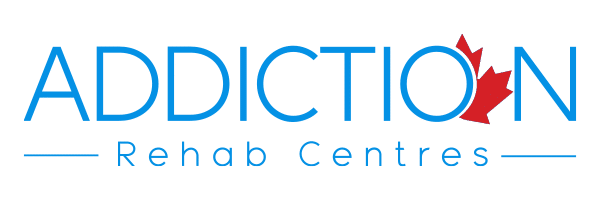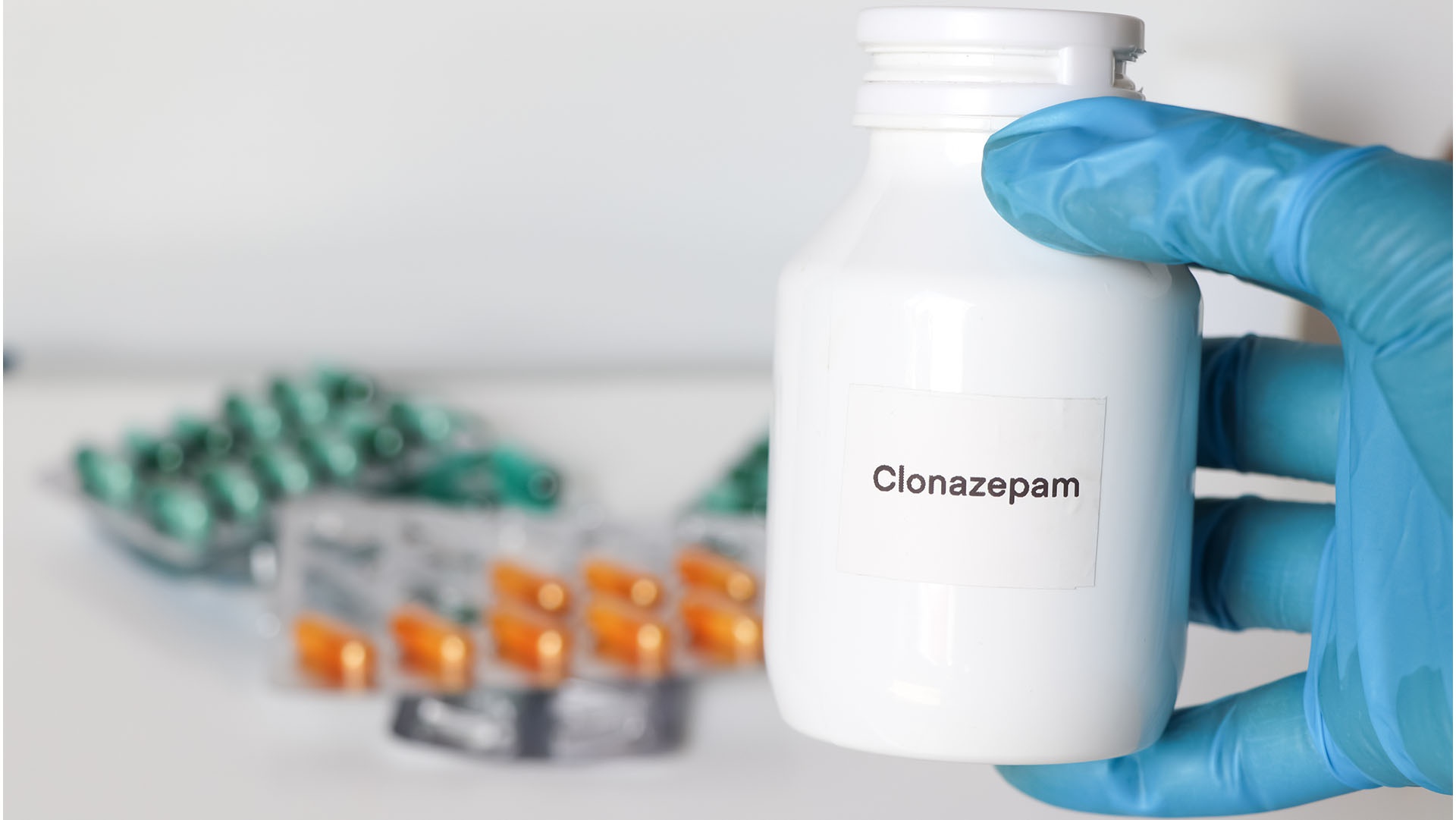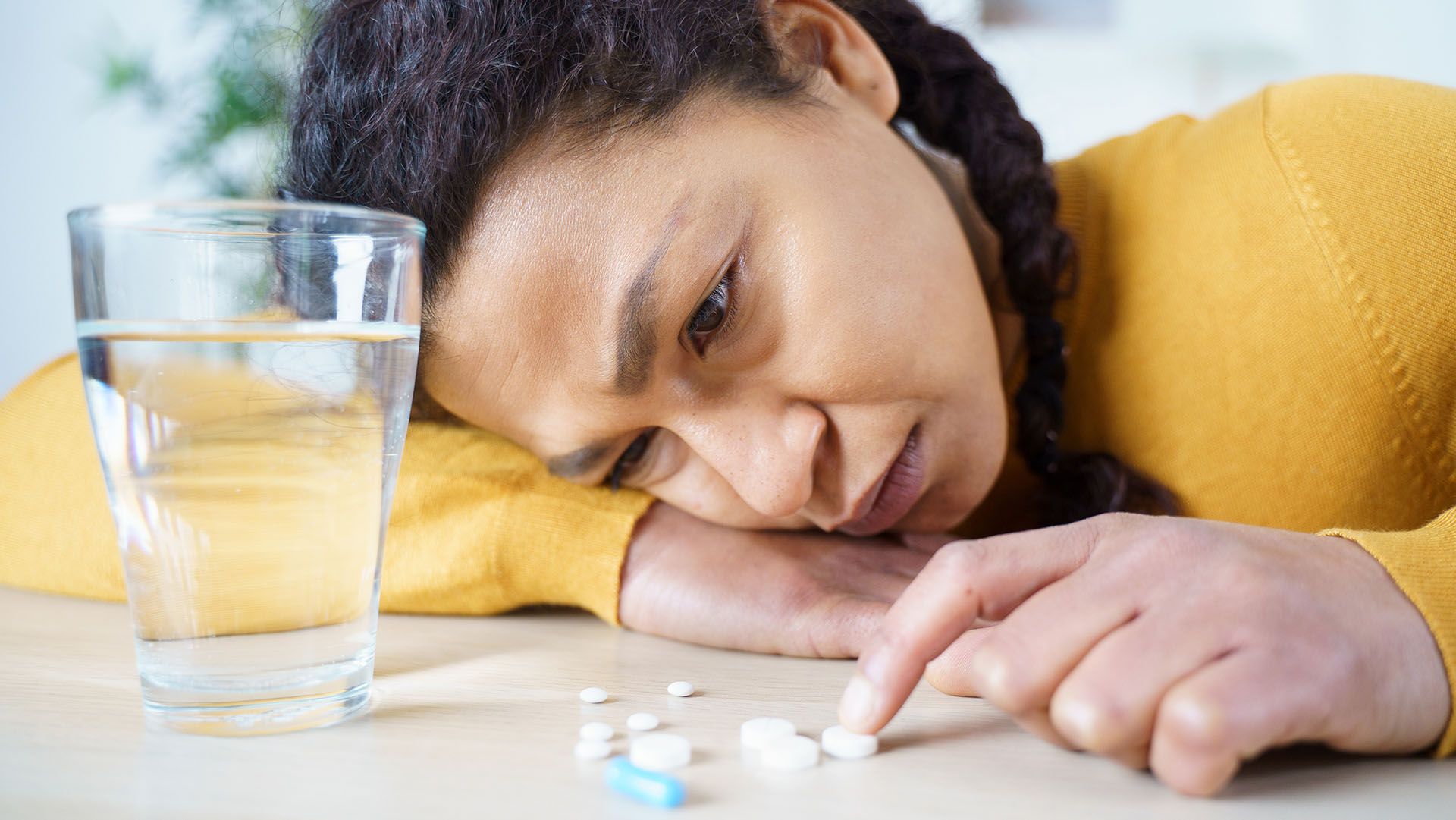Clonazepam/Klonopin Addiction Symptoms, Withdrawal and Recovery
Clonazepam, commonly marketed as Klonopin, is a prescription medication in the benzodiazepine family. Classed as central nervous system depressants, these drugs work by augmenting the sedating actions of the neurotransmitter gamma-aminobutyric acid (GABA). This suppresses the activity in the central nervous system that triggers the symptoms of conditions like epilepsy and panic disorder.
Being a long-acting benzodiazepine, clonazepam takes effect fairly quickly and stays in the bloodstream for up to fifty hours. Its long-lasting action and powerful effects make it a leading choice among doctors for the treatment of several conditions, including the following:
- Epilepsy and seizure disorders
- Insomnia and sleep disorders
- Mental illnesses such as generalized anxiety disorder, social anxiety disorder and panic disorder
- Some specific phobias
- Muscle spasms and restless leg syndrome
In some circumstances, Klonopin may also be used as part of a treatment plan for alcohol withdrawal syndrome and short-acting benzodiazepine addictions. It is also sometimes used as a pre-med sedative prior to surgical anesthesia.
One of the reasons for the widespread medical use of clonazepam is its fast action. It is used to treat rapid-onset symptoms that need immediate relief, such as those associated with seizure disorders. Unfortunately, it is this property that also makes its users susceptible to developing clonazepam drug abuse and addiction problems. All ethical doctors work with their patients to carefully manage their use of the drug and to avoid long-term use. However, prescription drug addicts frequently find ways of obtaining the drugs without the knowledge of their doctors, by resorting to such practices as doctor shopping (visiting multiple doctors in order to get multiple prescriptions).
When taken in its prescribed form, Klonopin is taken either as a pill to be swallowed or a quick-dissolve tablet to be placed on the tongue. People who become addicted to clonazepam often crush the tablets and inhale them through the nose for faster uptake into the bloodstream.
The Effects of Clonazepam Abuse and Addiction
It is important to stress that the majority of clonazepam/Klonopin abuse starts as legitimate, medically necessary prescription drug use. The problem arises when the prescribed dose is no longer sufficient to produce the feelings of calm and well-being that the patient has inevitably become accustomed to. As increasing quantities of the drug are taken at more frequent intervals, the individual can develop a strong physical dependence. Ultimately, they reach a point where attempting to quit the drug without the help of a doctor can lead to medical harm.
The Dangers of Klonopin/Clonazepam Overdose
Since Klonopin and alcohol are both central nervous system (CNS) depressants, they are commonly abused together to enhance the effects of both. Either substance can be dangerous when used alone: in combination, they can be fatal. The job of a CNS depressant is to suppress activity in the nervous system, and taking two together can lead to a heart rate and breathing that are low enough to result in coma and, ultimately, death.
Signs of a possible Klonopin overdose include impaired speech and memory, poor coordination, unsteady walking, reduced attention span and extreme drowsiness that cannot be attributed to other causes. Known Klonopin users who are observed with these symptoms should immediately be taken to the nearest emergency room.
A Troubling Trend: Teens and Clonazepam
In recent years, there has been a growing trend of clonazepam abuse among teens. In the United States, over 7% of high school students have reported non-prescription use of sedatives such as Klonopin. Because it is a prescription drug that can be legally obtained from a pharmacy, many teenagers and young adults perceive it to be a low-risk drug. That, combined with its easy availability and the fact that it costs less than many other drugs, makes it a tempting option for teens who are experiencing stress or anxiety.

Signs and Symptoms of Clonazepam Addiction
The symptoms of clonazepam addiction vary according to several factors, such as the dosages being used, the method of ingestion, and whether the individual is also addicted to alcohol or any other substance. Some of the more common addiction signs include the following:
- The person constantly craves Klonopin and feels anxious when they do not have access to it
- Their use of Klonopin continues despite negative consequences and a desire to quit
- Clonazepam abusers may find themselves in financial or legal trouble as a result of their addiction
- Prescription drug abuse can affect the individual’s ability to attend work or school, or to maintain relationships with loved ones
Clonazepam addiction and abuse can lead to several physical and psychological symptoms, including the following:
- Dizziness, vertigo and fainting spells
- Confusion, poor cognitive functioning and impaired judgment
- A sensation of numbness
- Reduced reflexes and slow reaction times
- Reduced libido
- Anxiety, agitation and restlessness
- Exhaustion, insomnia and sleep disorders
- Digestive problems such as constipation and loss of appetite
- Depression
What Friends, Family and Coworkers Might Observe
Clonazepam addicts do not always realize that they have a problem. However, they may exhibit some warning signs that are observable by the people around them. Examples include the following:
- Coworkers, teachers or classmates might notice increased absenteeism from work or school, reduced performance and missed deadlines
- The individual may become reclusive and abandon activities they previously enjoyed
- Family members might notice that the addict has more doctor’s appointments than necessary
- Loved ones might find that money or belongings go missing as the addict seeks ways to support the addiction
Clonazepam Withdrawal and Detox Timeline
People who are addicted to clonazepam usually have a physical dependence on it. This means that as they take increasing amounts, their bodies lose the ability to function without it. Attempts to quit “cold turkey” can lead to serious medical issues, such as intense anxiety and withdrawal seizures. In some cases, unsupervised withdrawal can have life-threatening consequences, especially if the person is also addicted to alcohol or another drug.
How Does Clonazepam Detox Work?
Medically supervised detox is the only safe way for a clonazepam abuser to quit the drug. Not only does it allow doctors to keep an eye on their patients and keep them safe during the detox process, but it also allows them to see their patients more comfortably through their withdrawal symptoms, which can be painful, frightening and bewildering.
The strategies used by the supervising medical professional depending on the individual being treated, and may include one or more of the following:
- Gradual reduction of the clonazepam dose to allow the body to safely reduce its dependence over time
- The use of phenobarbital in the treatment of withdrawal seizures
- The use of non-benzodiazepine anti-anxiety medications, such as Buspirone or Tegretol, to counter the overwhelming anxiety that can accompany withdrawal
Phases of Clonazepam Withdrawal Syndrome
Everybody experiences addiction differently, and that includes the clonazepam withdrawal schedule. The composition and severity of clonazepam withdrawal symptoms depend on many factors, such as the following:
- The extent of the addiction. Withdrawal symptoms can be more pronounced in people who have been using clonazepam for a long period of time, and in those who take high doses with little time between doses.
- Physical factors. In general, older people experience more intense withdrawal than younger people. This also varies according to the general state of the individual’s physical health.
- Mental health factors. Mental disorders and concerns frequently coexist with addictions. Whether the mental health issue predated the addiction or arose as a result of it, any co-occurring disorder can impact how the withdrawal process unfolds.
- Abuse of other substances. Klonopin addiction commonly exists alongside alcohol abuse or the use of crack cocaine. This can add medical risk to the withdrawal process.
- Family history. A family history of drug addiction is generally thought to increase the risk of dependence. In addition, genetic factors can influence how withdrawal is experienced.
- Environmental factors. People with stressful jobs, troubled relationships, a history of trauma or abuse, or difficulty balancing their work and personal lives can have a harder time dealing with the withdrawal process.
In general, benzodiazepine withdrawal happens in two stages: acute withdrawal and post-acute withdrawal.
Acute clonazepam withdrawal symptoms can appear mere hours after the last dose. They tend to peak in one or two weeks and then gradually taper off. Acute withdrawal symptoms include the following:
- Panic attacks, agitation and anxiety
- Elevated heart rate and palpitations
- High or fluctuating blood pressure
- Seizures
- Increased sensitivity to sound and light
- Nausea, vomiting and stomach pain
- Elevated body temperature and increased sweating
- Hallucinations
- Dizziness or headaches
- Impaired memory
- Numbness or a “pins and needles” sensation
- Insomnia
- Poor coordination
- Shaking hands
- Thoughts of suicide or self-harm
Post-acute or protracted withdrawal symptoms can last up to two years and include anxiety, depression, mood swings and irritability, and restlessness.
Klonopin/Clonazepam Addiction Treatment
Like all other elements of addiction, rehab and treatment are highly individualized. Everyone’s path to addiction is different, and their road to recovery should be specially laid out just for them. What works for one person might be counterproductive for another.
The first step in any addiction treatment program is to ensure that the addict is withdrawn from the drug safely, through medically supervised detox. This process can take up to a month, depending on the individual. The detox process depends on each set of individual circumstances, ranging from a schedule of tapering dosages for the patient to follow at home, to 24-hour care at a hospital or drug rehab and treatment center.
Once the drugs are out of the person’s system, the rehab phase of addiction recovery can begin. Through this process, the person explores and resolves the issues that led to their addiction. In some cases, addictions are triggered and fueled by trauma. In others, they start as a legitimate use of prescription drugs and then escalate. The treatment varies from person to person and may include any combination of individual therapy, group or family counselling, cognitive behavioural therapy, art or music therapy, life coaching, exercise and nutrition counselling, and more.
Clonazepam addiction treatment and rehab can be done on an outpatient basis, with the person following a treatment schedule at home and checking in with their doctor, or on an inpatient basis in a rehab/treatment facility. Both approaches have their advantages and disadvantages.
Advantages of outpatient treatment:
- The person can attend work and school and engage in their usual daily activities
- The person has unlimited access to their home support system of family and close friends
- Being in the “real world” makes it easier to generalize the skills and techniques learned in therapy
- It costs significantly less than inpatient rehab, and some parts of the treatment may be covered by the provincial health plan
Advantages of inpatient treatment:
- There is immediate access to medical care at any hour of the day or night, should the need arise
- Residents of rehab facilities do not have access to drugs or outside influences that could trigger a relapse
- The person can focus on recovery without having to worry about food and shelter
- The person has access to a community of people who are going through their journeys of recovery
Acute withdrawal symptoms peak two weeks after stopping the use of clonazepam, but subtle signs can last anywhere from a week to a month.
Relapse Prevention
All addiction treatment programs, whether inpatient or outpatient, should come with an aftercare program that provides the person with access to support once the rehab phase is over. What the aftercare looks like will depend on each set of circumstances, but it may include the following:
- Follow-up visits to the doctor or therapist
- Education sessions for the recovering addict and loved ones
- Access to a helpline that can be called in the event of a crisis
If the addiction started as a result of legitimate medical use of Klonopin, the doctor will need to find an alternative means of treating the condition for which it was prescribed. As part of the aftercare program, this will be carefully monitored not only to ensure the ongoing health of the individual but to reduce the risk of a relapse.









